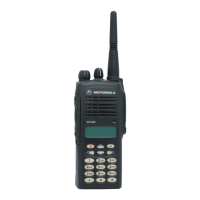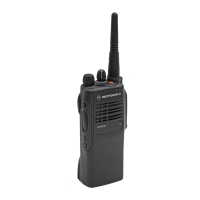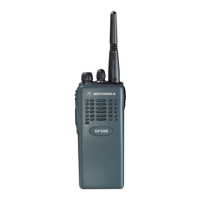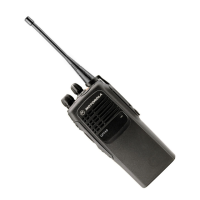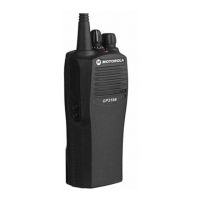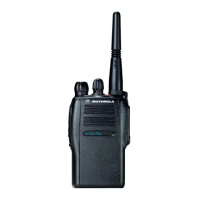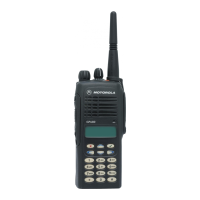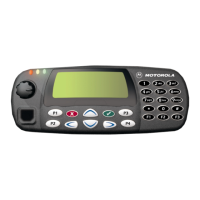Chapter 2
THEORY OF OPERATION
1.0 Introduction
This Chapter provides a detailed theory of operation for the 300-350MHz circuits in the radio. For
details of the theory of operation and trouble shooting for the the associated Controller circuits refer
to the Controller Section of this manual.
2.0 Transmitter
(Refer to Figure 2-1 and the Transmitter schematic diagram)
The transmitter contains five basic circuits:
1. power amplifier,
2. antenna switch,
3. harmonic filter,
4. antenna matching network,
5. power control integrated circuit (PCIC).
Figure 2-1 Transmitter Block Diagram.
2.1 Power Amplifier
The power amplifier consists of two devices:
1. 9Z67 LDMOS driver IC (U101) and
2. PRF1507 LDMOS PA (Q110).
The 9Z67 LDMOS driver IC contains 2 stages of amplification with a supply voltage of 7.3V.
This RF power amplifier is capable of supplying an output power of 0.3W (pin 6 and 7) with an input
signal of 2mW (3dBm) (pin16). The current drain would typically be 160mA while operating in the
frequency range of 300-350MHz.
PCIC
PA
Antenna Switch/
Driver
Stage
Harmonic Filter
Vcontrol
Vcontrol
From
Antenna
Matching
Network
Power
Amplifier
VCO
P A Final

